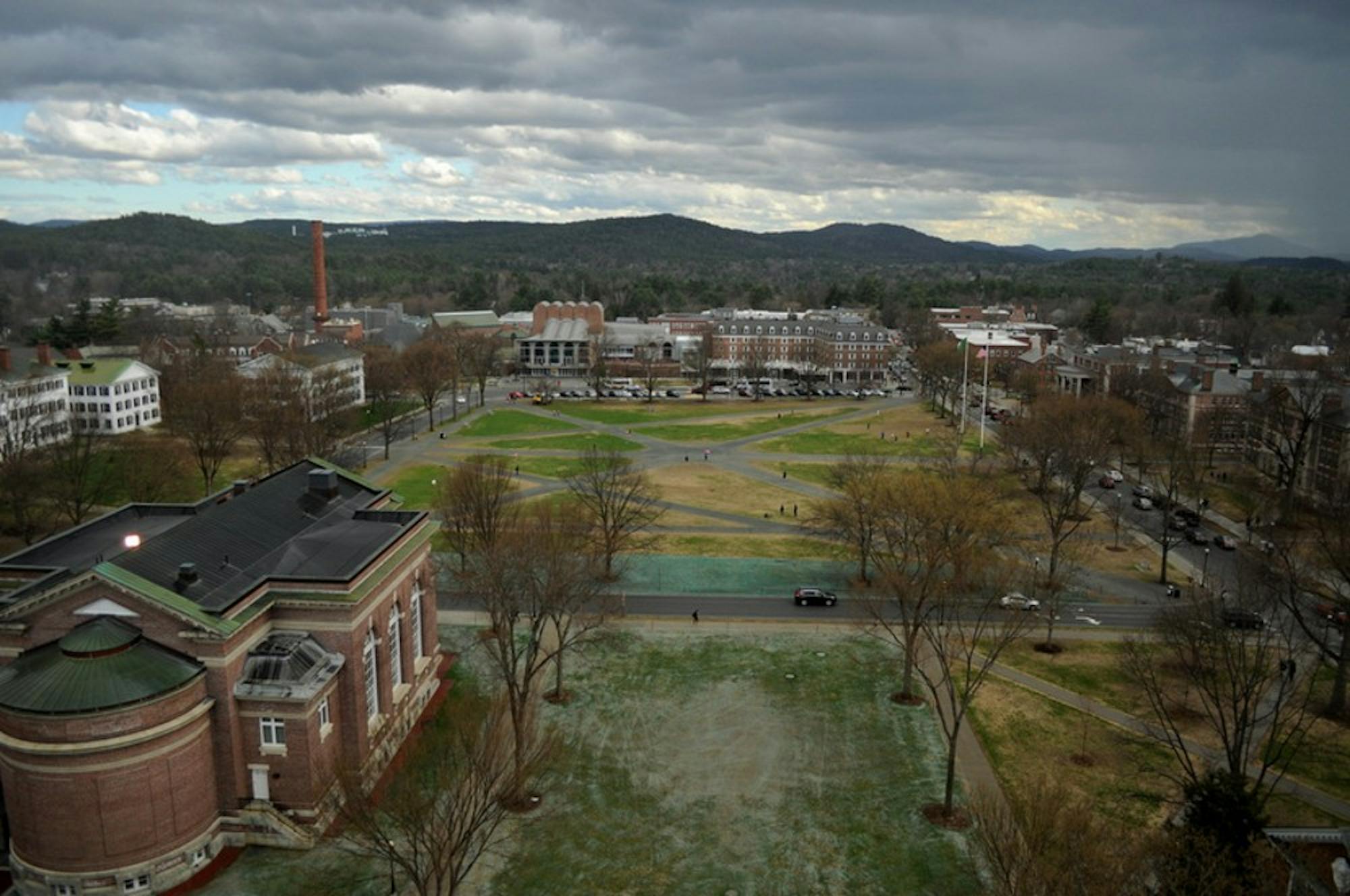The liberal arts experience promises a well-rounded education to students. Despite exposure to multiple fields of study, majors are often broken up along gender lines. As the evidence shows, 44 years after Dartmouth went coeducational, certain undergraduate majors are still heavily skewed towards men or women. In an undergraduate student body evenly split between men and women, men still make up the disproportionate share of science, engineering and mathematics majors while women still make up a disproportionate share of arts and humanities majors.
“There is this undercurrent of judgment about which gender is more capable of what,” former president of the Association for Women in Mathematics and mathematics professor Carolyn Gordon said.
Only two of the 10 most popular majors for women are in the sciences at Dartmouth, compared to five of the 10 most popular majors for men, according to data from the Office on Institutional Research.
Despite the general trend where approximately 60 percent of the majors in the science division at Dartmouth are male, women also continue to be particularly underrepresented in quantitative science fields like computer science, chemistry and physics.
The Women in Science Project at Dartmouth was founded in 1991 to encourage and support female students at Dartmouth interested in STEM fields. WISP particularly works to target first year female students interested in STEM. An even number of men and women enter Dartmouth with an interest in STEM fields, even though fewer women ultimately major in the area.
“That’s not a problem if they choose to leave the sciences for the right reason but what concerns us is when they leave for the wrong reason, when they think they’re failing and they’re not failing,” assistant director for outreach and programs for WISP Kathy Scott Weaver said.
Weaver said that stereotypes and societal assumptions can lead women to develop falsely low perceptions of their own abilities in math and sciences.
All students and faculty interviewed for this article who expressed on an opinion on the issue stressed that the gender imbalance in STEM was not the result of innate differences between genders, but rather the result of societal conditions such as gendered expectations for career paths.
Gordon said that, within our society, there is still a perception that STEM is a male field and that this perception can affect the number of advanced STEM courses students take in high school, consequently affecting their decision to major in a STEM subject in college.
Another factor is confidence, Gordon said. In math, when people are deciding whether to take the honors or non-honors version, two students who had the same performance previously may judge their readiness for said difficulty differently, with women more likely to judge themselves harshly.
“If a guy doesn’t do well in the course, he may have a whole litany of excuses, and a woman says, ‘I wasn’t good enough’” said Dana Williams, chair of the math department.
Another important element is a lack of female role models. Some STEM departments do better than others at providing female role models for students, such as biology, which is currently on its third female chair, Weaver said.
Gordon noted that the success of WISP in other STEM fields like the life sciences and engineering may have drawn potential female math majors away from the subject, though Gordon stressed that she viewed WISP positively. The department, at least on the basis of individual professors, would also like to see more women taking math courses.
Math is a predominantly male department. In 2015, 59 percent of majors were male, a proportion closer to gender parity than in years past. In 2010, 73 percent of math majors at the College were male, and in 2005, 63 percent of majors were male.
Jade Yen ’19, who has taken a number of math classes, noted that there might be five to seven women in a class in comparison 18 to 20 men.
Despite the general trend of predominantly male STEM majors, majors in the life sciences or brain sciences such as biology, neuroscience and psychology, are mainly female. Women also make up the majority of applicants to medical schools from Dartmouth, Weaver said . By contrast, only 46 percent of medical school applicants nationwide are female. This exception amongst STEM majors may come from a mindset among women that values helping others, she said.
“[Women] want to help people. They want to make a difference in the world. When women can see the impact of the work they’re doing, they’re much more motivated” Weaver said, while acknowledging that she was generalizing women.
Additionally, there exist engineering opportunities at the College that focus on helping others, in a manner similar to the life sciences, such as a class on human-centered design and the Dartmouth Humanitarian Engineering club, Weaver said.
Chair of the geography department Susanne Freidberg gave a similar explanation for the popularity of the geography department among women, where 75 percent of majors are female.
“We have a strong emphasis on international development, global health and social justice issues. And those are the kinds of classes where we also have majority women,” Freidberg said.
As for Dartmouth’s most popular science subject, engineering, the gender ratio is almost at parity, compared to the situation nationwide where only 19 percent of engineering majors are female, Weaver said. Forty-six percent of engineering science majors in 2015 were female as opposed to only 32 percent in 2011. Part of that success can be attributed to a hands-on approach to engineering, such as in the introductory engineering class, which encourages all students to get involved in the subject, according to Weaver. She added that another reason for the near gender parity is community building, which helps women feel more comfortable in the field. The Thayer School of Engineering contains common spaces for students and there is a Dartmouth chapter of the Society of Women Engineers.
However, the gender imbalance in STEM majors is flipped in a gender disparity in humanities majors at the College, where 62 percent are female.
Chair of the art history department Mary Coffey noted that the gender balance of art history classes was relatively even, despite the fact that the art history department has had between eight and 19 male majors per year for the past five years and at most two male majors per year. This may reflect students taking art history classes as a non-major interest or to satisfy a distributive requirement, Coffey said.
Coffey also speculated that the predominantly female major pool could be a result of the perception that art history and other humanities majors have riskier employment prospects and may attract students who are consequently less concerned about their future employment, which can tend to include students who are not planning on being the sole breadwinner in their homes.
“That could have something to do with gender prescriptions or gender expectations but I would be really hesitant to make any strong arguments,” Coffey said.
Several chairs of departments with predominantly female majors said that improving the gender balance was not a priority.
Coffey said the department is more focused on getting people from different socioeconomic and ethnic backgrounds involved in the arts to expand the view of a discipline that was originally very Eurocentric.
The reasons for gender balance can be difficult to determine in some departments. History, the fifth most popular major for men and seventh most popular major for women, is currently 59 percent male. The discipline can be classified in the social sciences or the humanities by different college — for organizational purpose, history is a social science at Dartmouth.
“We have people who look like they’re doing stuff like IR [international relations], but we also have people who look like they’re doing stuff like English literature,” chair of the history department Robert Bonner said.
Moreover, Bonner stressed that the different subfields of history, rather than the subject as a whole, are more likely to attract one gender than the other. For instance, a military history course previously offered at the College was predominantly male while a women’s history courses are typically predominantly female.
The social sciences as of 2015 saw a split between male and female majors. The majors that make up interdisciplinary studies, which includes majors for various area and identity studies, as well as miscellaneous fields such as linguistics and environmental science, are 63 percent female.




